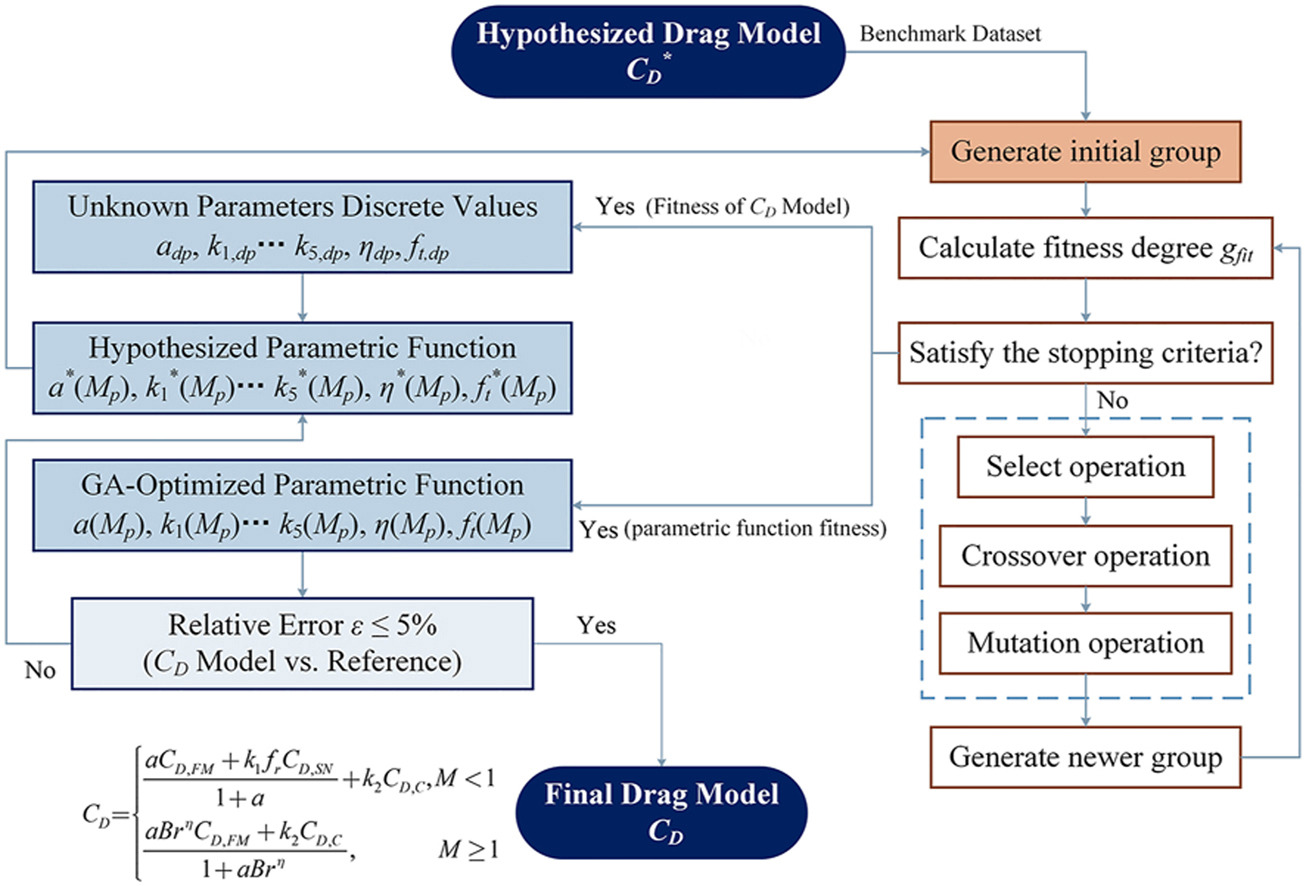• Develop a general drag model with compressibility, rarefaction and temperature-ratio corrections.
• The proposed drag model is suitable for all flow regimes by genetic algorithm fitting.
• The benchmark dataset is generated based on extensive experimental, DNS, and DSMC results.
• Conduct model validations and comparisons against two previous experiments.
This study presents a semi-empirical, comprehensive drag coefficient formulation for spherical particles moving in a gaseous medium. Leveraging a substantial body of experimental data, Direct Numerical Simulation (DNS), and Direct Simulation Monte Carlo (DSMC) results, the formulation incorporates compressibility, rarefaction, temperature ratio, shock wave physics, drag crisis and recovery effects. This comprehensive approach accurately models particle drag across a wide range of particle Mach and Reynolds numbers. Specifically, a genetic algorithm is employed to fit the formulation to the aforementioned data, resulting in a concrete expression. Compared to two latest universal drag models, the proposed formulation demonstrates a significantly lower relative error. Furthermore, three-dimensional numerical simulations using Ansys Fluent validate the accuracy of the developed model in applications, by contrasting its performance with the two state-of-the-art universal drag models.

